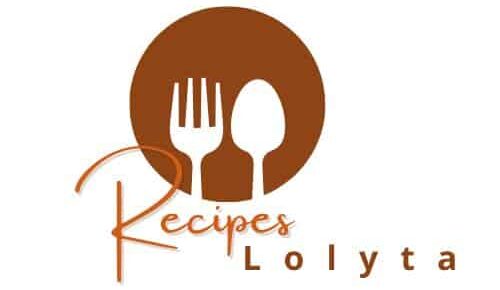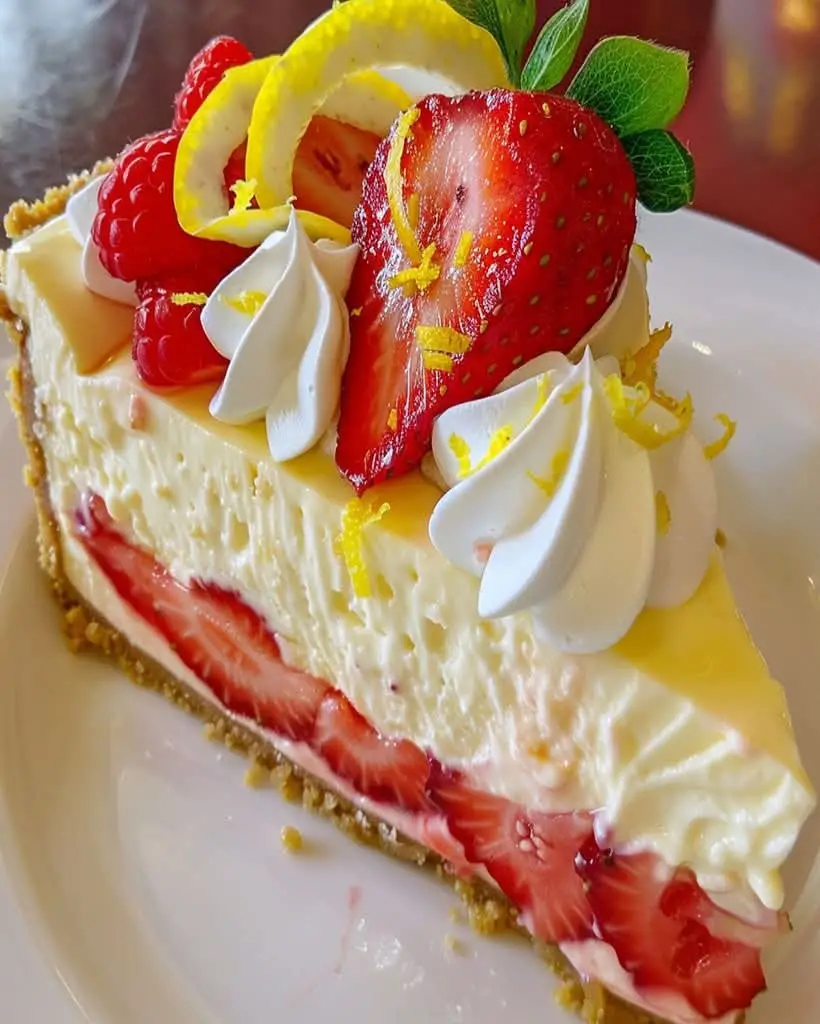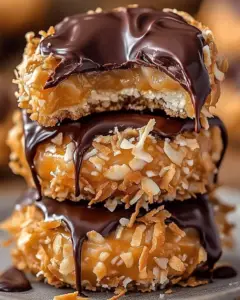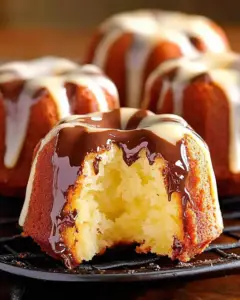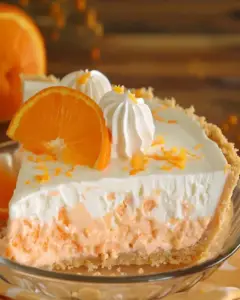Irresistible Lemon Strawberry Cheesecake: A Delightful Twist on a Classic
Indulge in the delightful combination of citrusy lemon and sweet strawberries with this irresistible lemon strawberry cheesecake. With its vibrant flavors and creamy texture, this cheesecake is sure to be a hit at any gathering. Imagine the zesty lemon perfectly complementing the juicy strawberries, creating a luscious treat that tantalizes your taste buds. Not only does this cheesecake taste divine, but it also looks stunning—a feast for both your eyes and palate.
Quick Recipe Highlights
- Flavor Profile: The lemon offers a sharp, tangy contrast to the sweet, ripe strawberries, creating a balanced and refreshing taste sensation.
- Texture: Creamy and smooth, with a slight firmness from the cheesecake and a buttery bite from the crust.
- Aroma: The cheesecake fills the room with a delightful scent of fresh citrus and sweet berries, inviting you to indulge.
- Visual Appeal: The vibrant yellow of the lemon layer contrasts beautifully with the vivid red strawberries, making it as picturesque as it is delicious.
- Skill Level Needed: Perfect for intermediate bakers; this recipe requires precise mixing and baking techniques for best results.
- Special Equipment: Springform pan is a must for easy release; a mixer will help achieve the right consistency for the cheesecake batter.
Recipe Overview
- Difficulty Level: Medium. The challenge lies in balancing the flavors and achieving the perfect bake, requiring some attention to detail and patience.
- Category: Dessert. This cheesecake is the perfect ending to an abundant meal, offering both richness and a refreshing citrus finish.
- Cuisine: This dessert is a fusion of classic American cheesecake with a twist of summery flavors common in Mediterranean cuisine.
- Cost: Moderate. The fresh strawberries and lemons might add to your grocery bill, but the overall indulgence is worth every penny.
- Season: Best enjoyed in spring and summer when strawberries are at their peak and lemons are bright and juicy.
- Occasion: Ideal for special occasions like birthdays, holidays, or even casual get-togethers where you want to impress your guests.
Why You’ll Love This Recipe
This lemon strawberry cheesecake brings together a delightful mix of tang and sweetness. The creamy texture of the cheesecake melts in your mouth, coupled with the refreshing taste of lemon and strawberry, making each bite a delicious experience. The fresh strawberries provide a burst of flavor, enhancing both the cheesecake’s taste and its visual appeal. You’re not just enjoying a dessert; you’re treating yourself to an aesthetic experience as well.
Beyond its taste, this recipe’s convenience cannot be overstated. With straightforward steps that guide you through each process, even those new to cheesecake baking will find this recipe manageable. The preparation methods are simple enough for bakers with moderate experience yet rewarding in their outcome.
Nutritionally, the use of fresh fruit imbues this dessert with vitamins and a bit of fiber, making it a slightly healthier choice than its more sugar-laden counterparts. The balance of natural and sweet flavors allows for a richer taste without excessive sugar reliance.
Socially, it’s a show-stopper of a dessert. Its stunning appearance coupled with its delicious taste makes it perfect for serving during festive occasions. Whether for a family gathering or a summer party, this cheesecake will have your guests talking and coming back for seconds.
Additionally, the accessibility of ingredients makes this cheesecake not only a treat to the senses but also easy on the wallet. Common pantry staples are used, with the fresh produce being the primary extraneous purchase, which is generally affordable, especially in their prime seasons.
Historical Background and Cultural Significance
The cheesecake, as a dessert concept, has a storied past that is as rich as its taste. Originating from ancient Greece, cheesecakes were once considered a source of energy, even served to athletes. As it traveled through time, adapting to various cultures, the modern American cheesecake gained its creamy texture with the introduction of cream cheese in the 19th century.
This luscious combination of lemon and strawberry pays homage to the diverse influences on the classic cheesecake, specifically drawing from Mediterranean flavors where citrus fruits like lemons play a significant role in many desserts and savory dishes. The pairing of strawberry and lemon has grown popular for its harmonious contrast, a nod to both traditional and contemporary gastronomy.
Over the years, the recipe has evolved with local adaptations, particularly in America, where regional fruits are often incorporated to celebrate the farm-to-table trend. This lemon strawberry variant showcases this evolution by merging timeless techniques with fresh, new flavors.
Different regions have embraced this dessert with distinct variations. While some might opt for a denser, New York-style cheesecake, others prefer a lighter, no-bake version. Yet, the universal appeal remains in the combination of rich creaminess and refreshing fruit, adaptable for various palates.
Ingredient Deep Dive
The lemon, central to this recipe, brings an unmistakable brightness and zest. Historically, lemons have been prized not only for their flavor but also for their various health benefits, such as being an excellent source of Vitamin C. When selecting lemons, look for firm, vibrant yellow fruits that feel heavy for their size, indicating juiciness. To maintain their freshness, store them in the refrigerator and use within a week for optimal flavor.
Strawberries further elevate the cheesecake with their natural sweetness. Fresh strawberries, particularly those in season, offer the best flavor and aroma. Nutritionally, they are rich in Vitamin C and antioxidants. When purchasing, choose strawberries with a bright red color and shiny appearance, storing them in the fridge where they can last a few days. If strawberries are out of season, frozen ones can work as an alternative, though fresh is always preferable for garnish.
Common Mistakes to Avoid
- Overbeating the batter: This can incorporate too much air, leading to cracks on the surface of your cheesecake. Mix just until combined.
- Not using a water bath: This essential step helps maintain an even cooking temperature and prevents the cheesecake from drying out.
- Opening the oven mid-bake: Doing so can cause the temperature to drop, potentially leading to cracks.
- Skipping the chilling time: Cheesecakes need ample time to set properly in the fridge for the ideal texture.
- Using low-fat ingredients: Full-fat cream cheese and sour cream are necessary for achieving the proper creamy consistency.
- Underbaking: Make sure the edges are set while the center remains slightly jiggly for a perfect result.
- Improperly preparing the crust: Press the crust firmly into the pan, ensuring an even layer to support the cheesecake.
- Not allowing ingredients to reach room temperature: Everything from the cream cheese to the eggs should be at room temperature to mix smoothly and evenly.
Essential Techniques
Creating the perfect water bath is crucial for a smooth cheesecake. This technique involves placing the cheesecake in a larger pan filled halfway with water, ensuring even heat distribution and minimizing the risk of cracks. Mastering this method involves wrapping the springform pan with foil to prevent leaks and carefully monitoring the water level during baking.
To achieve the creamy texture this cheesecake demands, it’s important to master gentle mixing. Overmixing can introduce too much air into the batter, causing it to rise and fall dramatically during baking, resulting in cracks. Mix the ingredients until just combined to maintain the desired smoothness and consistency.
Pro Tips for Perfect Lemon Strawberry Cheesecake
– Use room temperature ingredients: This ensures smoother mixing and helps the batter combine evenly, avoiding lumps.
– Experiment with a citrus zester for garnish: A few strips of lemon peel curled atop the cheesecake add visual appeal and a punch of citrus aroma.
– Prevent cracking by avoiding sudden temperature changes: Let your cheesecake cool gradually in the switched-off oven with the door slightly ajar before refrigerating.
– Consider making a strawberry compote: Cook some strawberries with sugar to create a delicious topping that adds an extra layer of flavor.
– For a firmer crust, bake it for a few minutes before adding the filling to prevent moisture from making it soggy.
– Use a sharp knife to slice: Run it under hot water and wipe dry between cuts for perfectly clean slices.
Variations and Adaptations
Regional variations could involve using locally sourced toppings such as blueberries or raspberries in place of strawberries, offering a new but equally delightful experience. To adapt this cheesecake to the season, incorporate flavors like cranberry for fall or a dollop of fresh whipped cream for a touch of winter warmth.
For dietary modifications, consider making a gluten-free option with a crust made from almond flour and gluten-free cookies. Other variations might include reducing the sugar for a less-sweet version or using dairy-free alternatives to make it suitable for those with lactose intolerance. Textural modifications can be achieved by folding in whipped cream for a lighter, mousse-like filling.
In terms of presentation, try serving this cheesecake with a dusting of powdered sugar or topped with a sprig of mint for a touch of green. Creative plating techniques or individual servings in small jars can also elevate its presentation.
Serving and Presentation Guide
Plating this cheesecake involves clean lines for visual appeal. Use a sharp knife to slice, ensuring neat edges. Consider garnishing each slice with a fresh strawberry or a twist of lemon peel. Traditional accompaniments include a dollop of whipped cream or a sprinkle of graham cracker crumbs for added texture.
For a modern twist, offer the cheesecake in individual servings, perhaps layered in cups for a parfait-like presentation. Temperature is key; serving slightly chilled enhances its creamy texture and citrus flavors. Control portions by cutting thinner slices, especially at events where multiple desserts might be available.
Wine and Beverage Pairing
This cheesecake pairs beautifully with a light-bodied wine, such as a Moscato or Riesling, which complements the dessert’s sweet and tangy flavors. A non-alcoholic option could be a sparkling elderflower drink, providing a similar floral note and effervescence.
For coffee enthusiasts, a freshly brewed cup of light roast coffee or a lemon-infused tea can harmonize with the cheesecake’s citrus elements, while serving them slightly warmer temperatures brings out the nuanced flavors.
Storage and Shelf Life
Proper storage is essential for maintaining freshness. After allowing the cheesecake to cool to room temperature, cover it tightly in plastic wrap or store in an airtight container. Refrigerate for up to five days, though it’s best enjoyed within three.
Check for spoilage with visual and olfactory inspections; the appearance of mold or a sour smell indicates it’s time to discard. If reheating, allow it to warm to room temperature for a few minutes or place inside a low-temperature oven for a few minutes. A well-wrapped cheesecake also freezes well for up to a month; thaw in the fridge before serving.
Make Ahead Strategies
Consider assembling the cheesecake a day ahead to allow the flavors to meld. If you can’t bake it the day before serving, the crust and filling can be prepared separately and stored in the fridge. Assemble and bake later for freshly prepared taste with minimal day-of effort.
The quality of the cheesecake benefits from a day’s rest in the fridge, becoming more flavorful and richer as the ingredients settle. Ensure all elements, like the fresh strawberry topping, are added last minute to maintain their texture and freshness.
Scaling Instructions
When scaling the recipe, adjustments in ingredient quantities will require similar adjustments to baking time and equipment sizes. For a smaller yield, halving the ingredients requires a smaller pan, reducing cooking time slightly. Alternatively, double the ingredients for a larger crowd, using multiple pans or a larger one, with careful monitoring to ensure even baking.
Make note, the mixing and chilling times remain the same regardless of scale, while storage and reheating considerations may need larger or additional refrigerated space.
Nutritional Deep Dive
This lemon strawberry cheesecake offers a satisfying balance of macronutrients, with the cream cheese providing fats, and the crust contributing carbohydrates. Rich in calcium and Vitamin C thanks to lemons and strawberries, it supports a balanced diet in moderation.
It’s a calorie-dense dessert, so portion control helps maintain dietary goals. Opt for smaller slices or share portions as a way to balance indulgence with nutritional mindfulness.
Dietary Adaptations
For a gluten-free version, substitute the crust ingredients with almond flour or gluten-free cookie crumbs. A dairy-free option requires using lactose-free cream cheese substitutes and coconut milk alternatives for a suitable texture. Vegans might try a mix of cashew cream and coconut yogurt as a filling base, ensuring flavor and richness remain elevated.
Low-carb dieters can use a sugar alternative, while Keto-friendly crusts can be crafted using almond or hazelnut flour bases. Low-FODMAP considerations would involve careful ingredient selection, with dairy-free cheeses and suitable sweeteners to adhere to dietary needs.
Troubleshooting Guide
If experiencing texture issues, ensure ingredients are at the right temperature before mixing. Underbaking often causes excessive softness—a firm but jiggly center indicates readiness. For flavor balance, adjust sugar and citrus to taste before baking. Remedy temperature problems by using a reliable oven thermometer and avoiding unnecessary door opening during baking. Equipment challenges, such as springform pan leaks, can be mitigated with a tight foil wrap. If ingredients are unavailable, consider similar textured or flavored substitutes, ensuring the overall profile remains consistent. Timing concerns and forgotten steps can lead to a less perfect outcome, but proper planning and monitoring keep the process smooth.
Recipe Success Stories
Feedback on this recipe consistently praises its delightful balance of flavors and creamy texture. Community adaptations have seen successes with different berries, adding raspberries or blueberries for personalized twists. Some readers suggest chilling in the fridge overnight enhances flavor complexity. Photography tips shared by others include close-ups of the cheesecake’s layers and showcasing the vibrant colors through careful lighting. Embrace the creativity of those who have repurposed this recipe as mini-cheesecakes for picnics or as jarred versions for easy transport and serving at parties.
Frequently Asked Questions
To avoid cracks, ensure a smooth batter and use a water bath during baking. Avoid overmixing the batter and opening the oven door during baking.
Can I use frozen strawberries?
Yes, thaw them thoroughly before adding to maintain consistency and flavor. Be sure to remove excess water to prevent sogginess.
How important is the springform pan?
It’s essential for easy removal without damaging the cheesecake, allowing for clean edges and presentation.
What if I don’t have a mixer?
While a mixer is ideal for achieving the right texture, you can use a whisk and elbow grease; ensure ingredients are fully incorporated.
Can I make this recipe ahead of time?
Yes, the flavors improve with time. Make the cheesecake a day in advance and chill it for the best taste.
What’s the best knife for slicing?
Use a thin, sharp knife. Warm it in hot water and dry it between each cut for clean slices.
How do dairy-free versions taste?
With the right substitutes, like cashew cream, the taste is comparably rich, though not identical. Expect slight flavor differences.
What wines go best with this cheesecake?
Sweet Moscato or a light Riesling complement the tangy-sweet profile perfectly.
How do I fix grainy batter?
Ensure ingredients are at room temperature, and mix until just combined to prevent graininess.
Can I freeze the cheesecake?
Yes, wrap slices individually for easy defrosting. Thaw in the fridge to maintain texture.
Can I reduce the sugar content?
Adjusting sugar is possible, but alters flavor balance. Use fruit for natural sweetness.
What are good toppings for this cheesecake?
Whipped cream, zest, or compotes add depth, while fresh fruit enhances presentation.
Additional Resources
For those looking to expand their cheesecake skills, explore additional recipes such as a New York-style variant for a traditional twist. Delve into technique guides emphasizing mixing and baking skills to hone your craft. Ingredient information resources delve into the significance of selecting fresh fruits and quality dairy products. Equipment guides recommend investing in quality springform pans and mixers for consistent results. Seasonal variations and flavor profiles offer inspiration for creating other desserts that reflect changes in available produce and personal taste preferences.
Print
Irresistible Lemon Strawberry Cheesecake
Description
A delightful and creamy cheesecake bursting with the flavors of fresh lemon and sweet strawberries.
Ingredients
For the Crust:
- 1 1/2 cups graham cracker crumbs
- 1/3 cup melted butter
- 1 1/4 cups sugar, divided
- 24 oz cream cheese, softened
- 3 large eggs
- 1 tbsp lemon zest
- 1/4 cup lemon juice
- 1 tsp vanilla extract
- 1 1/2 cups sliced strawberries
Instructions
1. Prepare the Crust:
- Preheat oven to 325°F (160°C). Mix graham cracker crumbs, melted butter, and 1/4 cup sugar in a bowl. Press mixture into the bottom of a 9-inch springform pan.
- In a large bowl, beat cream cheese and remaining sugar until smooth. Add eggs one at a time, mixing well after each. Stir in lemon zest, lemon juice, and vanilla extract.
- Pour cream cheese mixture over crust. Bake for 30 minutes or until center is just set. Let cool before topping with sliced strawberries. Refrigerate for at least 4 hours before serving.
Notes
You can customize the seasonings to taste.
